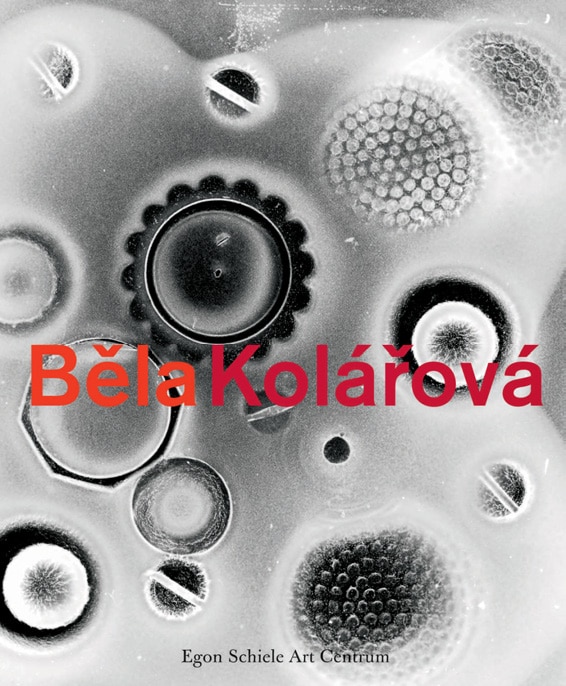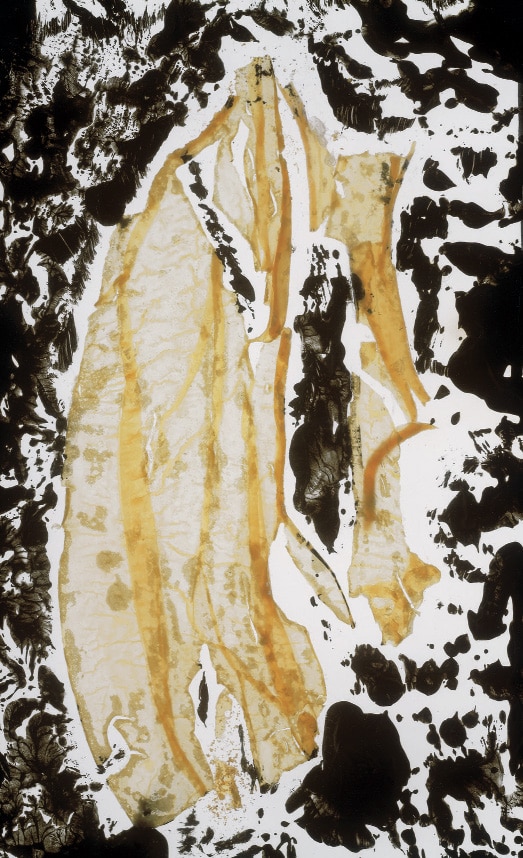An Absolute Photographer
The Egon Schiele Art Center in Český Krumlov celebrated the anniversary of Běla Kolářová’s birth (1923) by holding a retrospective exhibition, accompanied by the publication of a monograph. The publishers commissioned Josef Hlaváček to write an introduction (translated into English and German), and the concept and organization of the event was done by Hana Jirmusová on the institutional side and by Martin Souček of the Arbor vitae publishing house. In this way, a fresh reading of Kolářová’s experimental work has been achieved, at least in comparison to the catalogue published in 1997 by the Gallery of Visual Arts (Galerie výtvarného umění) in Litoměřice. Back then, Josef Hlaváček not only wrote the foreword, but also selected the works on exhibit. In what manner the focus of the two publications differs can be summarized by a quote from the more recent one. Characterizing 1964 as the year of a metamorphosis in Kolářová’s work, Hlaváček writes: “She assembles objects and then fixes them in the photographic manner, but the moment is coming when she will realise that photographic mediation is superfluous and let the assemblages breathe and live an independent life.” The perspective thus defined resulted in a certain prevalence in the Litoměřice publication of assemblages over photographs. In the recent publication, it is the other way around. A mere sixth of the book is dedicated to objects. I consider this emphasis on photographic work a providential one, since Běla Kolářová’s way of working within this medium remains unique.
Běla Kolářová developed an experimental analysis of the creative possibilities of photography after having in the latter half of the 1950s started to capture her hallucinatory vision of a world of objects and childrens’ games on her rambles through the periphery of Prague. She was nonetheless struck by the futility of this extensive undertaking and instead decided to develop the ethos of discovery of the interwar avant-garde, arriving through the new, transformed conditions at different conclusions than her predecessors. She rendered the enlarger her source of light, and the adventure of discovery began in the space under its magnifying glass. By using different masks, she restricted the ray of light so that she could draw in the light-sensitive emulsion. She commented on her approach: “And all that is missing now is movement. Any kind of movement, moving the lens, the whole enlarger, shifting the paper in all directions, lifting it.” Aside from these unique photograms, Kolářová also created artificial negatives. “In those three years of work in the darkroom I tried out all kinds of methods,” she writes of her experiments of the early sixties, “First «vegetages» and «photocollages», where the object is directly projected onto the photographic paper. Second – when an object leaves an indentation in the surface of still pliable wax applied to celluloid or glass, and then projected onto paper. The shaping of the wax persuaded me to experiment to a far greater degree with other materials, such as glue, paraffin and paint. I call this kind of image «prints». Later I experimented with so-called «absolute photography» that was created only by light in motion. This method can be integrated with others, or light can be shaped with the aid of patterned glass, small objects, paintings or manuscripts. I used the camera also to create «arranged photographs».
As models for a number of works of the last category mentioned, Kolářová used forms modelled out of hair cuttings against a neutral background. The photographer also arranged a strand of hair on a reproduction of a nude, Giorgone – Sleeping Venus (1963) and on a portrait, Charles Baudelaire (1964). The notorious icons of world culture can be marked in a number of ways, such as with paper clips as in Lady with an Ermine (1964). By doing so, Kolářová advanced to so-called derealizations. Many images, such as for instance Precarious Circle (1963) are reminiscent of the fabric of assamblages of small objects (eggshells, corks, scraps of glass, spare parts…). Kolářová’s work eventually lead to the exhibiting of assamblages in their own right.
Personally I prefer Kolářová’s photographs to her objects: even though the objects lose their utilitarian aspect in assamblages, they do not lose their identity. By transmuting them into an abstract grey-on- grey spectrum the artist rises from tangible materiality towards transcendence.
#4 Intimacy
Archive
- #45 hypertension
- #44 empathy
- #43 collecting
- #42 food
- #41 postdigital photography
- #40 earthlings
- #39 delight, pain
- #38 death, when you think about it
- #37 uneven ground
- #36 new utopias
- #35 living with humans
- #34 archaeology of euphoria
- #33 investigation
- #32 Non-work
- #31 Body
- #30 Eye In The Sky
- #29 Contemplation
- #28 Cultura / Natura
- #27 Cars
- #26 Documentary Strategies
- #25 Popular Music
- #24 Seeing Is Believing
- #23 Artificial Worlds
- #22 Image and Text
- #21 On Photography
- #20 Public Art
- #19 Film
- #18 80'
- #17 Amateur Photography
- #16 Photography and Painting
- #15 Prague
- #14 Commerce
- #13 Family
- #12 Reconstruction
- #11 Performance
- #10 Eroticon
- #9 Architecture
- #8 Landscape
- #7 New Staged Photography
- #6 The Recycle Image
- #5 Borders Of Documentary
- #4 Intimacy
- #3 Transforming Of Symbol
- #2 Collective Authorship
- #1 Face


